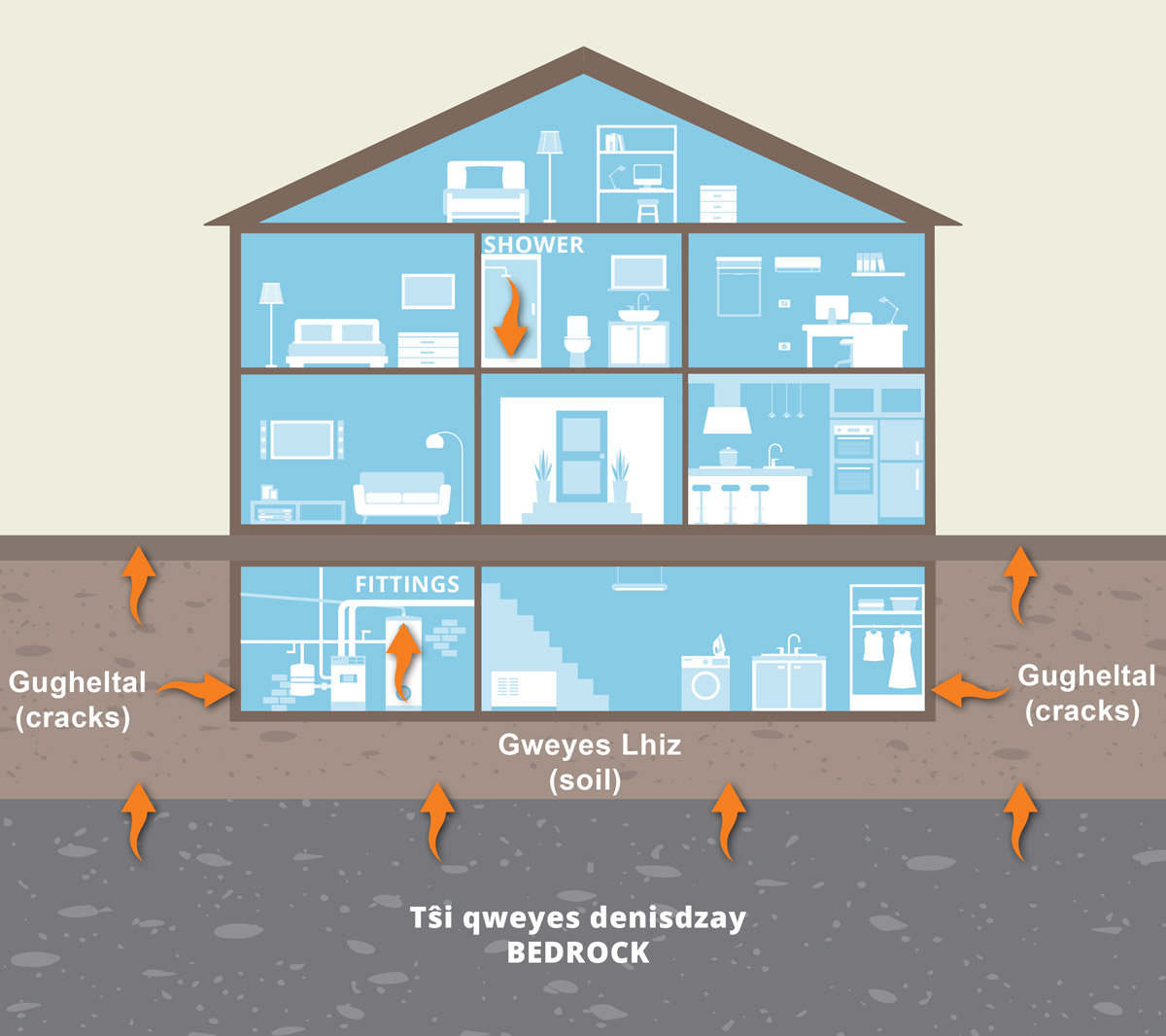
To better serve First Nations community members during Radon Awareness Month in November, the team at Environmental Public Health Services (EPHS) at First Nations Health Authority (FNHA) has put together awareness documents in First Nations languages.
English is not always the primary language in some of the communities and households the FNHA serves, and having documents in the local language helps with communicating the importance of radon testing. But beyond the practical considerations, it is also respectful.
“If community members are allowing us to go into their homes, then it's important for us to show respect and communicate with them in their language when we can," said Casey Neathway, Director of Regional Health Emergency Management and EPHS. “It's important we use the traditional languages of community members and provide accessible services through a culturally safe lens. It's a small thing for us, but can have a big impact."
The languages that have translations completed so far are for the Tŝilhqot'in and Ktunaxa Nations, with translations for the Nlaka'pamux Nation currently underway. These Nations were chosen to take part in the translations in part thanks to the availability of translators from those communities, as well as the large number of members who do not speak English. Another reason is because of the high incidence of radon in their geographic regions.
Feedback from those who were involved in the translation process has been positive and there are plans to roll out more translations in the future. The biggest challenge for other Nations will be in providing translators, as many First Nations languages have few fluent speakers.
The completed translations are already at their respective Nations and ready to be used when they are needed.
Radon is a colourless and odourless naturally occurring gas that is considered harmful to human health and the second leading cause of lung cancer in Canada. The gas can seep into homes through the soil and can only be detected through special equipment. Mitigation is often fairly straightforward by venting the gas through a pipe from under the home.
The FNHA can provide communities with radon detectors and in many cases can even come collect them, send them to a lab for analysis, and interpret the results.
Contact your Environmental Health Officer at environmental.health@fnha.ca for more information about radon or radon testing.
Download the documents here:

